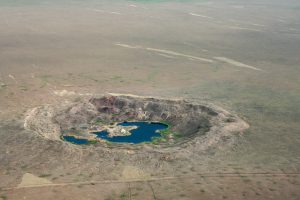Bilateral relations between Japan and Kazakhstan have grown increasingly robust since the latter gained independence in 1991. From an economic standpoint, bilateral trade from January to October 2019 totaled $1.3 billion. Japan’s foreign direct investment (FDI) and official developmental assistance (ODA) makes it one of the top 10 investors in Kazakhstan, and it has invested more than $7 billion in the country. The two countries have also sought to establish closer political ties through the Central Asia + Japan dialogue, an interregional forum for government officials in the five Central Asian countries and Japan to discuss and coordinate potential areas of cooperation.
However, Japan and Kazakhstan have another area of collaboration that delves into the shared historical traumas of both nations: a commitment to nuclear non-proliferation. Japan’s opposition to nuclear weapons stems from the U.S. bombings of Hiroshima and Nagasaki in 1945, which directly killed over 200,000 people and have contributed to abnormal rates of radiation-based illnesses among residents of the affected cities.
In the case of Kazakhstan, the Soviet Union established a site for testing nuclear weapons near the northeastern city of Semipalatinsk (or Semey, as it has been called since 2007). Scientists and military officials conducted a total of 456 tests in the area from 1949 to 1989, and the total impact of these tests was 45,000 times more powerful than the Hiroshima bomb. In the process, approximately 2.6 million Kazakh citizens were exposed to radiation. Some people died shortly after being exposed to nuclear material, while others developed radiation-linked illnesses or gave birth to children with elevated rates of physical and mental disabilities. Japan and Kazakhstan have both endured the horrors attributed to nuclear weapons, and this has shaped their steadfast mutual commitment to ending the production and proliferation of nuclear arms.
The impetus for establishing Japan and Kazakhstan’s joint effort on nuclear non-proliferation arose from the policies Kazakhstan pursued following the collapse of the Soviet Union in 1991. Kazakhstan initially had enough leftover Soviet weapons to make it the fourth-largest nuclear power in the world, but it purposefully chose to denuclearize, a goal which it achieved by 1995.
The newly established Kazakh government also allowed greater international access to previously restricted zones, including the Semipalatinsk test site. Teams of international monitors helped comprehensively assess the extent of the damage caused by nuclear fallout in the region. Observers representing the Japanese government and non-profit organizations saw parallels between Semipalatinsk and Hiroshima and Nagasaki, and thus promoted Kazakh-Japanese partnership in this area in order to bolster ties between the two countries, collaborate on research detailing the long-term health effects of nuclear radiation, and add momentum to the worldwide anti-nuclear movement.
The first major demonstration of Kazakh-Japanese cooperation in nuclear disarmament came in 1999, when the Japanese government, aided by the United Nations Development Programme and the Kazakh government, organized the Tokyo International Conference on Semipalatinsk. The event gathered representatives from multiple high-profile international organizations to discuss the need to provide aid to Semipalatinsk in such forms as improved health and medical care, economic development programs, and radiological assessments of the region’s environment.
This conference established additional venues for partnership opportunities between Japan and Kazakhstan. The Japan International Cooperation Agency, the Japanese government’s primary organization for distributing ODA and contributing to global socioeconomic development, helped establish programs in the Semipalatinsk region, particularly focusing on providing improved medical screening and treatment for local residents. Joint teams of Kazakh and Japanese scientists have worked together to study the environmental impact and health effects of nuclear radiation and devise methods for alleviating the damage caused by extensive nuclear exposure in the region.
Kazakhstan and Japan have also been involved in cultural exchanges and projects advocating for a nuclear-free world. For example, the United Nations University in Tokyo hosted the 2019 “Kazakhstan-Japan: Path to a Nuclear-Weapons-Free World” conference, which prominently featured the paintings of Kazakh disarmament activist Karipbek Kuykov. The Hiroshima Semipalatinsk Project, or “Hirosemi,” is a grassroots initiative that organizes exchange programs, along with medical assistance, between Hiroshima and Semey. In addition, the Kazakh song “Zaman-ai,” a song associated with the country’s anti-nuclear movement, gained popularity in Japan’s anti-nuclear campaign after it was translated into Japanese and English.
Lastly, the governments of Japan and Kazakhstan have worked together to call for an end to nuclear weapons within the international community. In 2009, Japan was the only developed nation to assist with writing the United Nations General Assembly Resolution that designated August 29 as the International Day Against Nuclear Tests. This date was chosen for the fact that it coincides with the first Soviet nuclear test conducted in Semipalatinsk in 1949, as well as the official closure of the site in 1991.
In 2015 and 2016, the foreign ministers of Kazakhstan and Japan co-chaired the 9th Conference on the Comprehensive Nuclear-Test-Ban Treaty (CTBT). Representatives from the countries’ governments issued joint statements voicing their continued support for the treaty. In short, the multiple levels and spheres of engagement involving non-nuclear proliferation have signaled Japan and Kazakhstan’s mutual pledge to resolve this issue to the greatest extent possible.
The aftermath of the bombings of Hiroshima and Nagasaki, and the extensive nuclear testing at the Semipalatinsk test site, represent dark chapters in the respective national histories of Japan and Kazakhstan. This represents a tragic bond, of sorts, for both countries, and has spurred leaders and activists to work together in hopes of preventing another nuclear catastrophe. In turn, Japan and Kazakhstan’s advocacy for nuclear non-proliferation has helped establish a genuine rapport between the governments of the two countries, and they can use this mutual commitment to further strengthen their burgeoning bilateral relations.

































